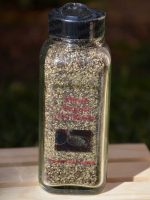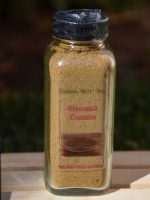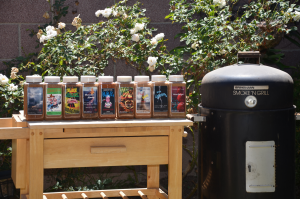Description
Celery seed has been used as medicine for thousands of years in the Eastern world. During ancient times, Indian Ayurvedic medicine used celery seed to treat colds, flu, water retention, poor digestion, different types of arthritis, and certain diseases of the liver and spleen. Regarded as easy to grow, celery is a marshland plant in the family Apiaceae that has been cultivated as a vegetable since antiquity. Also, celery has a long fibrous stalk tapering into leaves. Depending on location and cultivar, either its stalks, leaves or hypocotyl are eaten and used in cooking.
Celery leaves are pinnate to bipinnate with rhombic leaflets 3–6 centimeters (1–21⁄2 inches) long and 2–4 cm (1–11⁄2 in) broad. The flowers are creamy-white, 2–3 mm (3⁄32–1⁄8 in) in diameter and are produced in dense compound umbels. The seeds are broad ovoid to globose, 1.5–2 mm (1⁄16–5⁄64 in) long and wide.
Celery flowers, also called “bolting” or “going to seed,” at the end of its growth period as a natural part of its life cycle. Once celery has flowered, the stalks are likely too tough to enjoy, although you can use them to flavor simmering soups or sauces as long as you remove them before serving. A celery stalk readily separates into “strings” which are bundles of angular collenchyma cells exterior to the vascular bundles. Wild celery, Apium graveolens var. graveolens, grows to 1 m (3.3 ft) tall. It occurs around the globe.
Description:
The first cultivation is thought to have happened in the Mediterranean region, where the natural habitats were salty and wet, or marshy soils near the coast where celery grew in agropyro-rumicion-plant communities. North of the Alps, wild celery is found only in the foothill zone on soils with some salt content. It prefers moist or wet, nutrient rich, muddy soils. It cannot be found in Austria and is increasingly rare in Germany Celery is eaten around the world as a vegetable. In North America the crisp petiole (leaf stalk) is used. In
Usage:
Europe hypocotyl is used as a root vegetable. The leaves are strongly flavored and are used less often, either as a flavoring in soups and stews or as a dried herb. Celery, onions, and bell peppers are the “holy trinity” of Louisiana Creole and Cajun cuisine. Three Celery, onions, and carrots make up the French mirepoix, often used as a base for sauces and soups. Celery is a staple in many soups, such as chicken noodle soup.
To maintain freshness, this spice is shipped in glass bottles. That’s because glass jars can preserve the freshness of spices for up to 2 years. Glass is an awesome option for storing spices because it doesn’t react to ingredients, unlike plastics and wood. Glass doesn’t typically conduct heat and you can see what’s inside to keep track of inventory.
This spice is additive and preservative free !!!!
Shipped directly from our store to your door…….
“Life’s Good When You’re Cookin Wit’ Gus”









Reviews
There are no reviews yet.